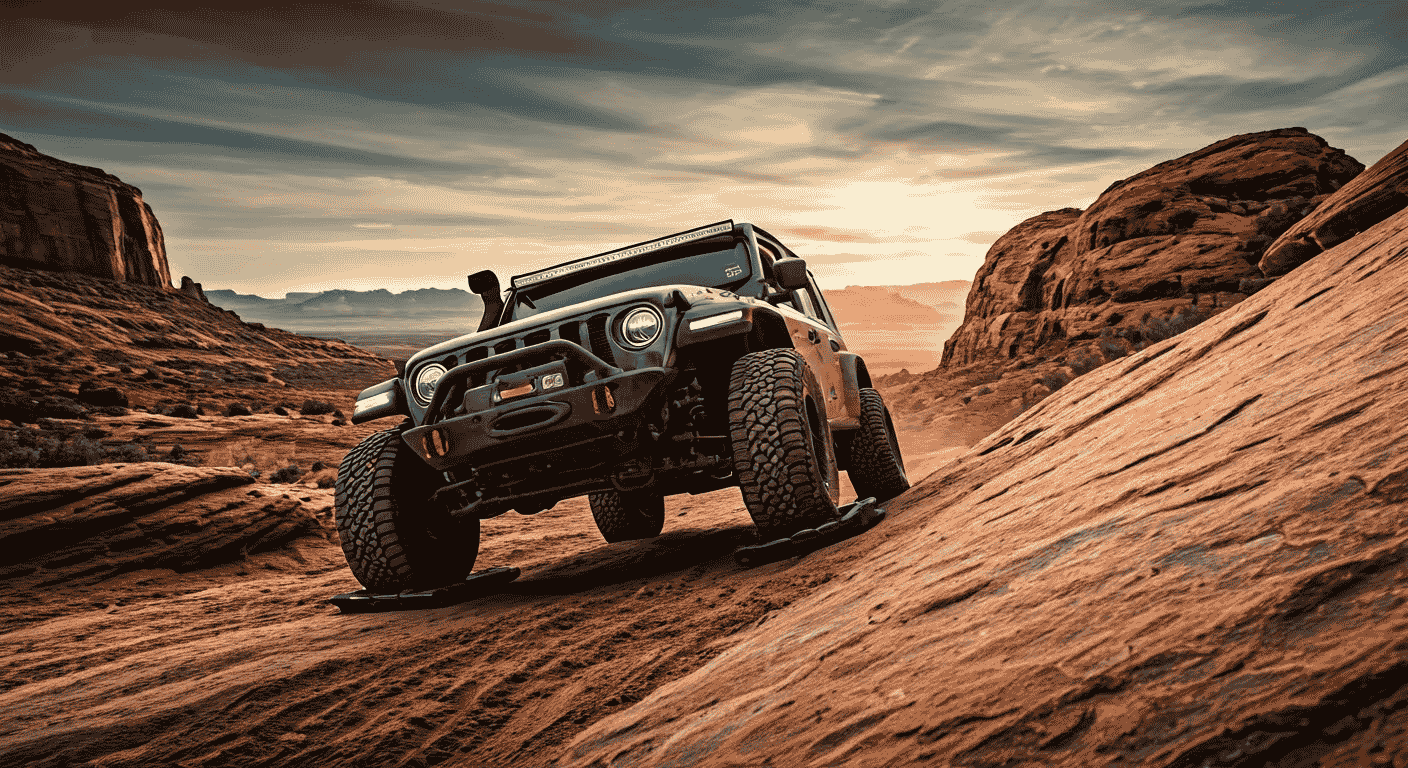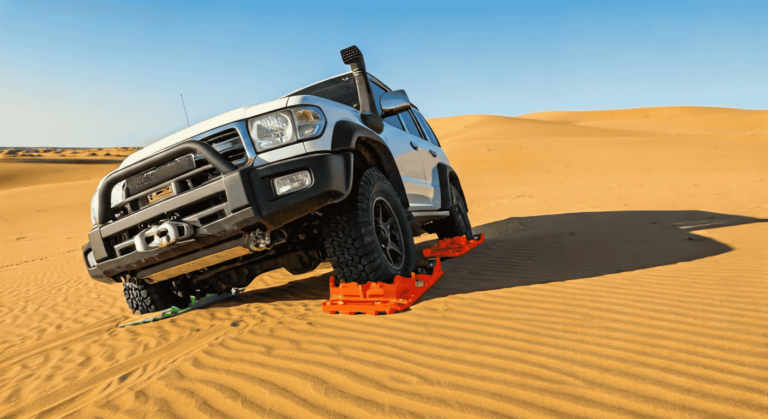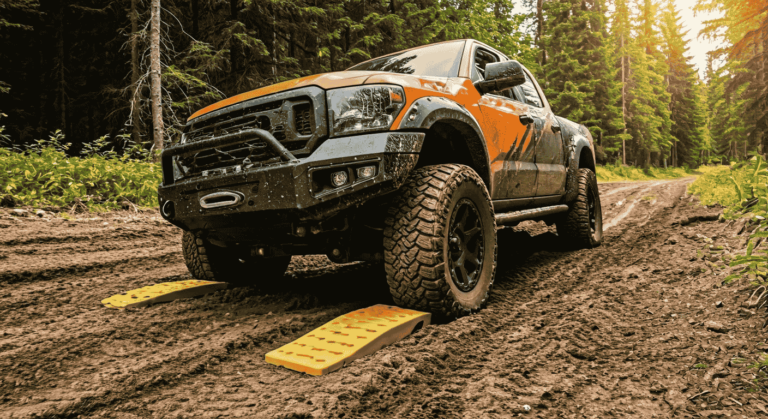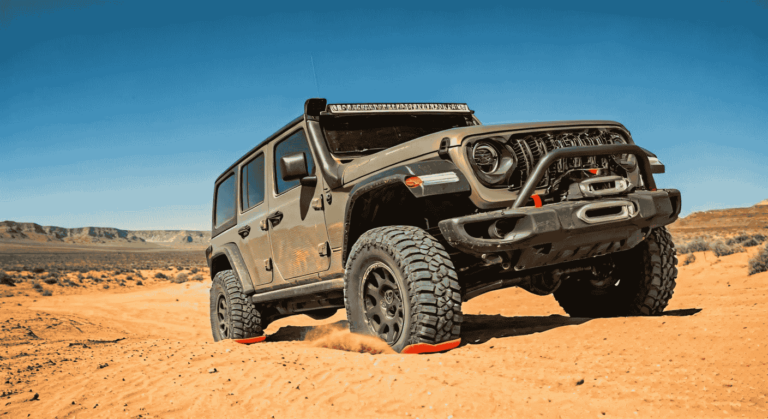Introduction to Recovery Traction Boards
What Are Recovery Traction Boards and Why You Need Them
Recovery traction boards, often referred to as traction mats or sand ladders, are ruggedly constructed devices specifically engineered to provide grip for vehicles stranded in mud, sand, snow, or rocky terrain. These critical tools assist wheels in regaining traction by providing a firm surface, enabling stuck vehicles to extricate themselves efficiently without relying on external assistance. Their reliability and ease of use have made them indispensable gear for both amateur adventurers and seasoned off-road aficionados.
Situations Where Traction Boards Can Save the Day
Traction boards are particularly invaluable during off-road excursions or journeys across unpredictable terrains. Imagine the frustration of being immobilized in muddy backcountry trails or sinking wheels deep into sandy beaches during coastal drives. Additionally, winter driving conditions frequently yield icy entrapments that challenge even the most skilled drivers. In these precarious scenarios, traction boards swiftly transform a hopeless situation into a manageable inconvenience.
A Quick History: From Sand Ladders to Modern Recovery Boards
The Science Behind Grip and Traction
Recovery traction boards operate on the basic principle of friction. Their surface features strategically placed cleats and nodules that latch onto vehicle tires, enhancing grip through increased frictional resistance. The textured surface minimizes tire slippage by maximizing surface contact, effectively translating wheel rotation into forward momentum.
How Recovery Traction Boards Work
Understanding Board Design: Key Features to Look For
Critical design elements to assess include traction cleat depth, board rigidity, handle placement, and tapered ends. Optimal designs incorporate robust construction to bear heavy loads, ergonomic handles for quick deployment, and dual-sided usability offering versatility. Effective drainage patterns and tapered edges further simplify insertion and retrieval beneath tires.
Materials Matter: Plastic vs. Metal vs. Composite
Material selection significantly influences durability, weight, and ease of handling.
Plastic boards, predominantly polypropylene-based, are lightweight, cost-effective, and corrosion-resistant.
Metal boards – often aluminum – offer exceptional rigidity and heat resistance but are heavier and potentially susceptible to corrosion.
Composite boards blend the best attributes of both materials, providing strength, manageable weight, and enhanced durability.
Types of Recovery Traction Boards
- Entry-Level Boards: Affordable but Reliable? Entry-level boards cater to budget-conscious users or occasional adventurers. Although generally crafted from lightweight plastic, these boards reliably serve in less demanding scenarios. However, they may lack longevity under repeated, high-intensity use.
- Mid-Range Boards: Balancing Performance and Price? Mid-tier boards strike an excellent balance between affordability and performance. Typically featuring enhanced materials and improved designs, these boards are well-suited for frequent off-road enthusiasts seeking reliability without excessive cost.
- Premium Boards: Are They Worth the Extra Cost? Premium traction boards command higher prices but promise uncompromising performance, durability, and additional features such as reinforced structural elements, versatile anchoring points, and heightened resistance to extreme environmental conditions. For serious adventurers regularly navigating challenging terrains, premium boards represent a prudent investment.
Top Brands in the Recovery Traction Board Industry
- Maxtrax: The Industry Favorite Australian brand Maxtrax is renowned for pioneering traction board innovation. Praised for robust construction, reliable grip, and unmatched resilience, Maxtrax boards are a mainstay within the off-road community.
- TRED: Durable and Versatile Choice TRED delivers dependable performance and innovative features such as advanced drainage channels and multifunctional designs, making them adaptable to varied conditions.
- X-BULL: Budget-Friendly and Effective X-BULL excels in delivering cost-effective solutions without compromising essential performance. Their traction boards are preferred by occasional adventurers who value affordability and reliability.
- ARB: Premium Option with Extra Features ARB’s recovery boards stand out with advanced ergonomic designs, superior material composition, and added features like integrated handles, improved cleat technology, and robust mounting solutions, justifying their premium status.
Comparing the Best Recovery Traction Boards: Head-to-Head Review
- Grip Performance: Which Board Provides the Most Reliable Traction? Consistent traction under diverse conditions is critical. Maxtrax and ARB excel in grip performance, closely followed by TRED, while X-BULL effectively meets expectations at a lower price.
- Durability Test: Can They Handle Extreme Conditions? Under harsh environmental conditions and repeated use, premium brands like Maxtrax and ARB consistently outperform mid-range and budget options.
- Ease of Use: How User-Friendly Are Different Models? TRED and Maxtrax receive top marks for ease of deployment, retrieval, and usability, while ARB focuses on advanced handling convenience. X-BULL remains user-friendly with straightforward deployment techniques.
- Storage and Portability: Convenient or Clumsy? Maxtrax, TRED, and ARB offer compact storage designs and integrated mounting options. Entry-level boards may lack efficient storage features, often requiring more space or separate mounting equipment.
Factors to Consider When Choosing Your Ideal Traction Board
- Terrain and Climate Compatibility: Ensure chosen boards align with frequent terrains encountered, whether sandy deserts, muddy trails, or icy conditions.
- Vehicle Weight and Size Considerations: Heavier vehicles necessitate robust traction boards designed for high load capacities to avoid bending or damage.
- Budget and Frequency of Use: Balance your budget against expected usage frequency. Regular off-roaders will benefit significantly from investing in mid-range or premium options.
- Additional Features and Accessories Worth the Investment: Consider extras such as storage bags, mounting brackets, and safety leashes that enhance convenience and usability.
Common Mistakes to Avoid When Using Recovery Traction Boards
- Improper Positioning and How to Do It Right: Always place traction boards securely beneath tires, aligned with wheel paths to ensure maximum grip effectiveness.
- Avoiding Damage: Tips to Prevent Breaking or Warping Use gentle acceleration and avoid excessive wheel spin to prevent board damage or premature wear.
- Maintenance Mistakes: Keeping Your Boards in Peak Condition Regular cleaning, inspecting for cracks, and storing properly extends board lifespan and maintains performance.
Real-World Experiences: Testimonials and Case Studies
- Off-Road Enthusiast Stories: Traction Boards Saving the Day Users frequently recount how traction boards have effectively turned potentially dire situations into manageable moments of adventure.
- Professional Insights: What Recovery Experts Recommend Experts recommend premium-quality boards due to reliability and long-term cost-effectiveness.
- Lessons Learned: Real-Life Mistakes and Successes User experiences underscore the importance of quality, preparation, and proper technique to leverage board benefits fully.
Final Thoughts: Choosing the Perfect Traction Board for Your Adventure
- Summary of the Key Points to Remember: Prioritize durability, ease of use, material quality, and compatibility with your adventure style and vehicle specifications.
- Making the Final Decision: Matching Boards to Your Needs Assess your specific terrain challenges, frequency of use, and budget constraints to select the most suitable traction boards.
- Embracing Safe and Confident Off-Road: Adventures Equipped with reliable traction boards, enjoy safer journeys and embrace the freedom of confident off-road exploration.




